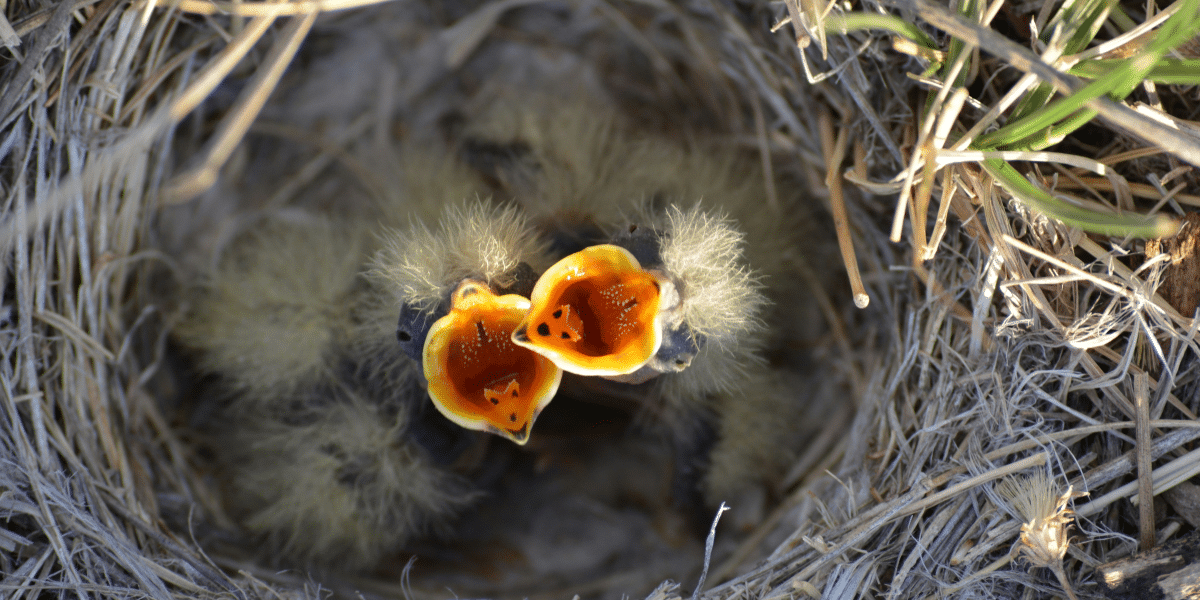As the warmth of spring and summer draws near, the natural world bursts into life, and with it comes the emergence of new life in the avian kingdom. Among the most heartwarming sights are baby birds chirping away in their nests, eagerly awaiting the return of their parents with a beak full of food. However, what happens when these young, delicate creatures are found without their guardians? Understanding what do baby birds eat and what to feed a baby bird is crucial to their survival and growth.
Understanding Baby Bird Nutrition
Feeding baby birds is not as simple as tossing them some breadcrumbs or seeds. These young birds have specific dietary needs that must be met to ensure their proper development. In the wild, parent birds feed their young a diet rich in protein, primarily insects, which provide essential nutrients needed for growth. This high-protein diet supports the rapid development of muscles, feathers, and other vital organs.
What Do Baby Birds Eat in the Wild?
In their natural environment, the diet of baby birds varies depending on the species. However, most baby birds, especially those that are altricial (born in an undeveloped state requiring care and feeding by the parents), rely heavily on protein-rich foods. Here’s a general overview of what different types of baby birds eat in the wild:
Insects and Larvae: Insectivorous birds, such as sparrows, robins, and bluebirds, primarily feed their young with insects, worms, and larvae. These are rich in proteins and fats, which are crucial for the rapid growth of the chicks.
Regurgitated Food: Some bird species, like pigeons and doves, feed their chicks a substance known as “pigeon milk” or “crop milk,” which is a regurgitated mix of partially digested food that is rich in fats and proteins.
Fruit and Seeds: Frugivorous birds, such as finches and tanagers, feed their young a mixture of fruit, seeds, and insects. The parents often crush or soften the food before offering it to the chicks.
Fish and Other Aquatic Life: Aquatic birds, like herons and kingfishers, bring small fish, amphibians, or invertebrates to their young, providing a balanced diet rich in protein and other nutrients.
What to Feed a Baby Bird in Captivity
If you find a baby bird that appears to be orphaned or abandoned, it’s important to know what to feed a baby bird until you can get it to a wildlife rehabilitator. Feeding a baby bird the wrong food can be harmful, so here’s a guide to safely feeding a baby bird:
Assess the Bird’s Condition: First, determine if the bird truly needs help. Sometimes, fledglings (young birds that have left the nest) appear to be in distress but are actually being monitored by their parents from a distance. Only intervene if the bird is injured, weak, or in immediate danger.
Create a Temporary Diet: If you must feed the bird, mimic its natural diet as closely as possible. For most baby birds, a mixture of softened dog or cat kibble, hard-boiled eggs, and mealworms can serve as an emergency diet. This combination provides a good balance of proteins and fats. Ensure the food is mashed into small, soft pieces that the bird can easily swallow.
Feeding Schedule: Baby birds need to be fed frequently, often every 15-30 minutes during daylight hours. Use a small, soft-tipped syringe or tweezers to gently place the food at the back of the bird’s mouth, mimicking the feeding method of its parents.
Hydration is Key: Baby birds get most of their hydration from the food they eat, so it’s important not to give them water directly, as this can lead to aspiration (inhaling the liquid). Ensure the food is moist enough to provide necessary hydration.
Seek Professional Help: As soon as possible, contact a local wildlife rehabilitator or veterinarian who specializes in birds. They can provide the appropriate care and diet for the specific species of bird you have found.
Common Myths About Feeding Baby Birds
There are many misconceptions about feeding baby birds that can lead to unintended harm. Here are a few myths debunked:
Myth: Baby birds can eat bread or milk.
Fact: Bread lacks the essential nutrients that baby birds need and can lead to malnutrition. Milk should also be avoided, as birds are lactose intolerant, and consuming milk can cause digestive issues.
Myth: It’s okay to feed baby birds earthworms.
Fact: While some bird species do eat earthworms, not all baby birds can digest them properly. It’s better to stick to safer alternatives like mealworms or a protein-rich mash.
Myth: Once you start feeding a baby bird, it will become dependent on humans.
Fact: Baby birds can be successfully rehabilitated and released back into the wild if properly cared for by professionals. Temporary feeding will not cause long-term dependence on humans.
Importance of Wildlife Rehabilitators
While it may be tempting to care for a baby bird on your own, it’s crucial to understand that wildlife rehabilitators have the expertise and resources to provide the best care for these animals. They can ensure that the baby bird receives the correct diet, medical care, and socialization with its own species, which are all vital for its eventual release back into the wild.
Wildlife rehabilitators are trained to handle a variety of situations, from feeding and medical care to reintroducing birds into their natural habitats. By reaching out to a rehabilitator, you are giving the baby bird the best chance of survival.
Conclusion
Understanding what baby birds eat and what to feed a baby bird is essential for anyone who may come across these vulnerable creatures. While it’s important to intervene when necessary, the goal should always be to provide temporary care and then hand the bird over to a professional wildlife rehabilitator. This ensures that the bird receives the proper nutrition and care needed for a healthy life in the wild.
Published by: Nelly Chavez

















